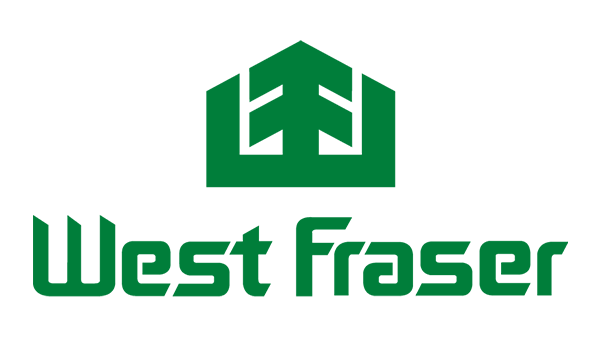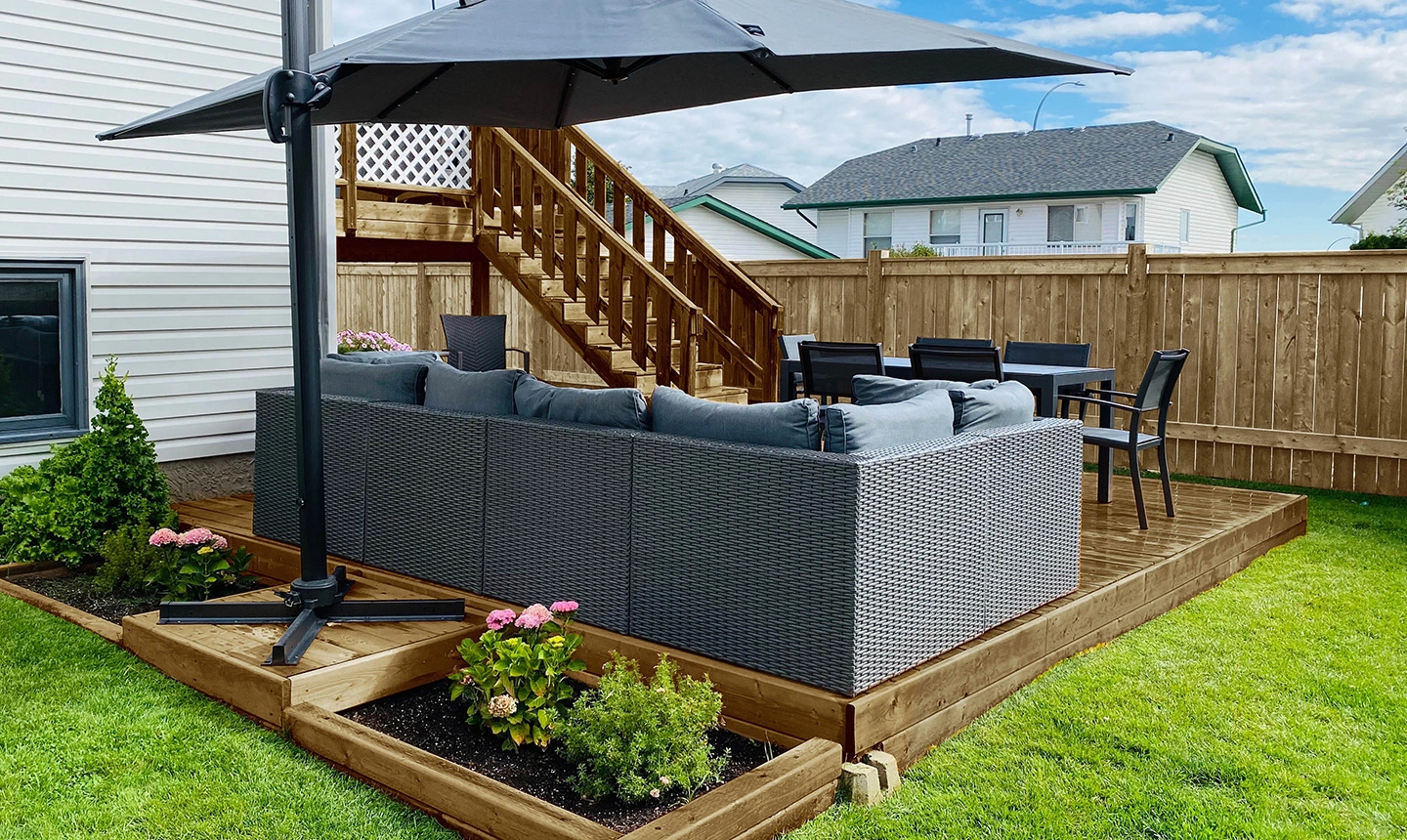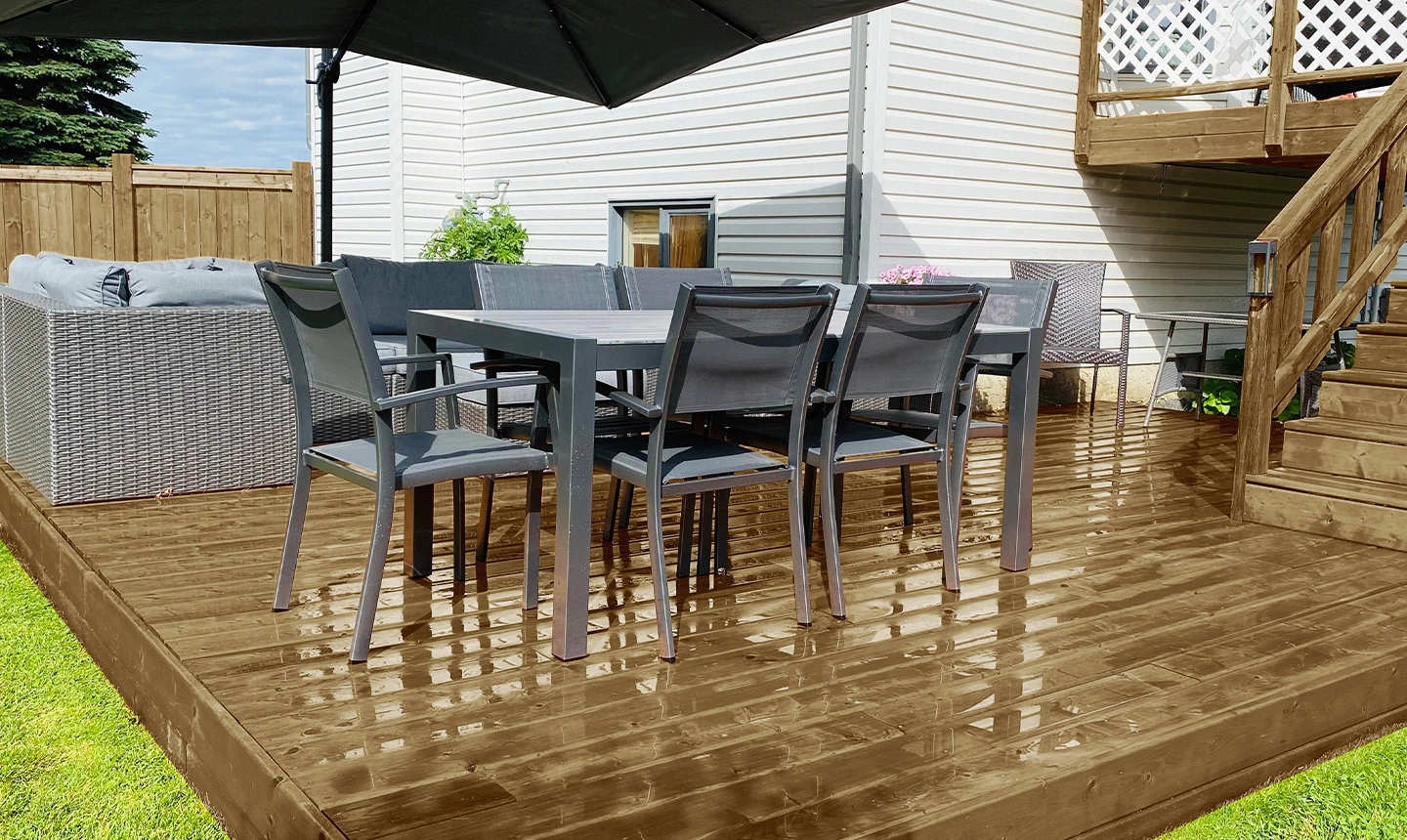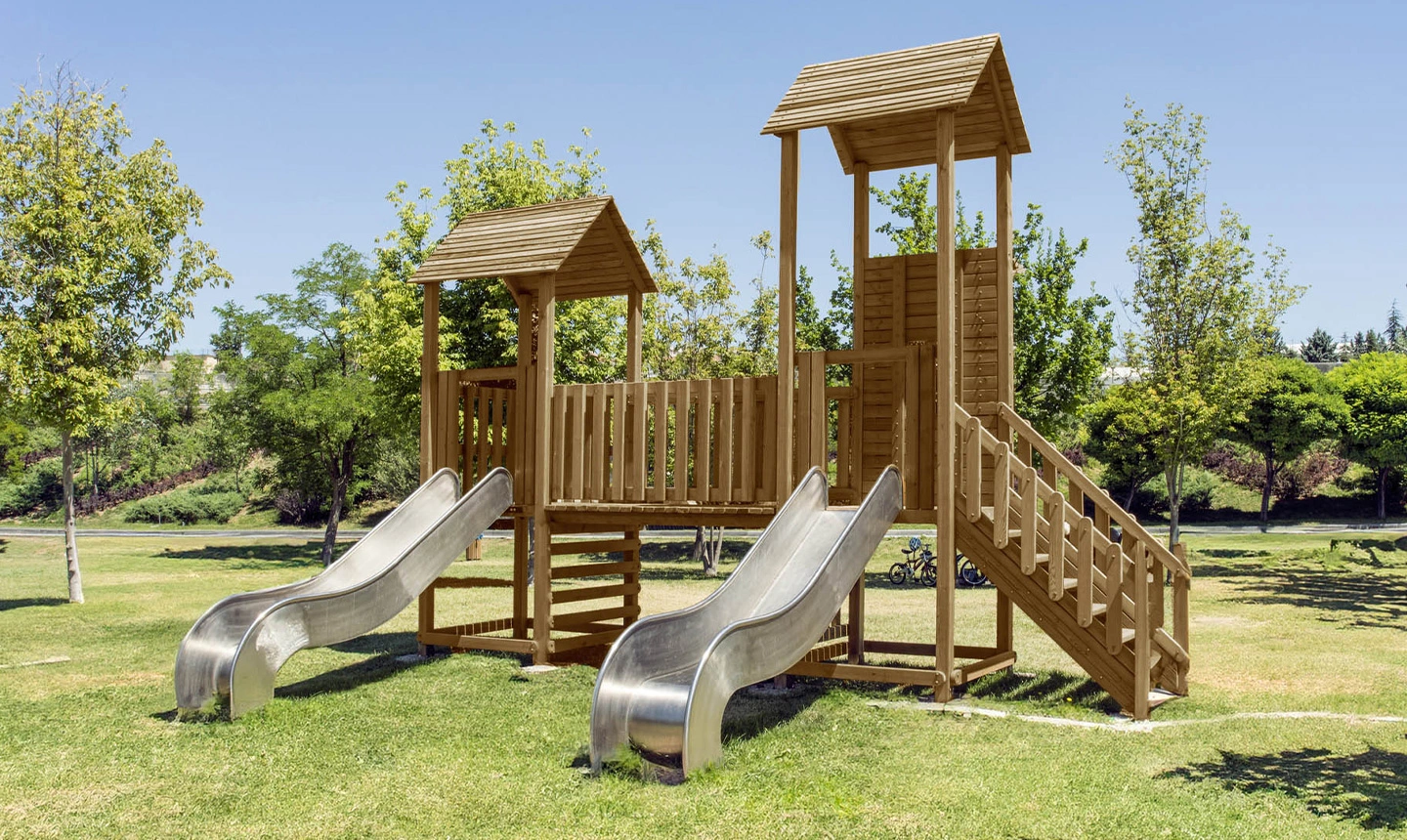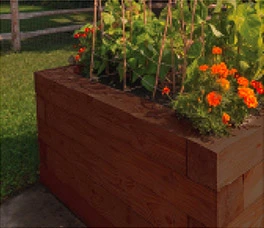A Finished Project from the Start
- HiLine Treated wood is pressure impregnated with MicroPro Sienna® preservative and uses an innovative micronized pigment technology to give the wood a warm natural brown tone.
- Ideal for decks, fencing, railings, steps, gazebos, playground equipment, trellis, lattice, structural framing, and every outdoor living space.
Proven Performance
- Proven protection for wood products in Canada since 2002.
- The preservative used in HiLine pressure treated wood meets Canadian Standards Association (CSA) as a wood preservative that has been formulated especially for Canadian species and use conditions. Wood treated with MicroPro can be used above ground, in ground contact and in fresh water.
- Utilizes the world’s most widely used form of copper preservative.
West Fraser’s high-quality, consistent substrate delivers the best value to dealers & consumers
Top Questions
Should I apply a finishing product to my HiLine Treated project right away?
Yes. Waiting a year or “a season” before applying a finish is a bit of misinformation about treated wood that has been circling around retail yards and contractors for some time. Unless the coating manufacturer stipulates otherwise, you can apply a stain or water repellent to the wood as soon as it is dry to the touch. It will depend on the weather, the exposure to sunlight and how wet the wood was when it was installed (it is saturated with water during pressure treatment).
To test that the treated wood is surface dry, sprinkle water droplets on the surface. If the water droplets are absorbed into the wood, it is ready for stain. If not, try sprinkling again in a few days. When you apply a protective finish be sure to follow the manufacturer’s recommendations, especially on how and when it should be applied.
Read More
Why does wood shrink and crack outdoors?
Wood is a natural product and due to its innate characteristics, it shrinks as it loses moisture and swells as it gains moisture. Changes in humidity and temperature can result in warping, checking, and splitting. The development of these seasoning characteristics is normal. Applying a water repellent or stain with water repellent as soon as the wood is dry to the touch will help to reduce the effects of seasoning and weathering.
Read More
Why is maintenance required on treated wood projects?
Nothing is “maintenance-free”. Pressure treating protects wood against structural failure due to rot, fungal decay or termite attack. However, moisture, sun, and outdoor conditions will cause wood to show signs of weathering. Natural weathering such as raised grain, splitting, checking, twisting, warping, shrinkage, or swelling occurs in both treated and untreated wood if left unprotected outdoors. To help reduce these effects, apply a high quality water repellent or stain with water repellent as soon as the wood is dry to the touch.
- Clean annually and keep your deck free from dirt and debris.
- A solution of liquid detergent and water with a stiff brush will remove mildew and dirt.
- For hard to clean surfaces, use a deck brightener containing oxalic acid to retain the wood’s natural beauty.
- Never use household chloride bleaches or foaming cleaners as they can strip the preservatives and damage the wood fibers leaving an unnatural whitewashed appearance.
- Be careful if using a pressure-washer as excessive pressure may cause damage to the wood.
How do I maintain the colour and surface of my HiLine Treated project?
A wide range of wood finishing products have been formulated for exterior wood care. As a general rule, you need pigments or colour in the product to protect the wood surface against UV damage. Always read the finishing product label and follow the manufacturer’s recommendations on how and when the product should be applied.
- Use a good quality oil-based or water-based stain, or exterior wood water sealant product with UV protection to help prevent the wood from turning gray from exposure to the sun.
- Apply a water repellent sealer at least every two years.
- Follow the manufacturer’s instructions.
How long will the colour of my HiLine Treated wood last?
Left unprotected, the warm brown colour of HiLine Treated will fade to a soft tan or beige and will gradually transition to grey. The length of time will vary according to the exposure to sunlight, the wood species and the application.
Read More
Why are there variations in the colour of my HiLine Treated wood?
Natural colour variations in the product are to be expected due to varying exposure conditions and different species of wood. In addition, colour variations may occur between heartwood and sapwood and knot areas from board to board or within the same piece of wood.
On some HiLine Treated wood a green colour may appear along the grain of the wood and around knots. Over time the green colour will soften and blend into the overall tone of the wood.
Read More
Can I use HiLine Treated wood in my raised vegetable garden bed?
HiLine Treated wood products may be used to construct raised garden beds. The HiLine Treated wood process is certified by Scientific Certification Systems, Inc. (SCS) as an Environmentally Preferable Product (EPP) based on SCS’ Life-Cycle Assessment. Very small amounts of copper and azole will migrate out of HiLine Treated wood over time. If it is desirable to minimize the migration of copper or azole into the soil of a raised garden bed, we recommend that a suitable thin plastic material be used as a barrier between the HiLine Treated wood and the raised garden bed soil. The use of a plastic barrier will also help keep soil within the bed area. For proper drainage, the plastic material should not be used underneath the raised garden bed.
Why is HiLine Treated wood more eco-friendly?
A new generation of copper-based wood preservative – Micronized Copper Azole (MCA), MicroPro Sienna is used to pressure treat HiLine Treated wood. The copper is micronized or mechanically ground to sub-micron size for pressure treating without the use of solvents. This technology reduces the environmental footprint of MicroPro Sienna to less than half that of traditional treated wood.
- MicroPro was the first, and is the only, wood treatment process to be certified as an Environmentally Preferable Product (EPP), by Scientific Certification Systems (SCS), based on Life-Cycle Assessment.
- UL GREENGUARD GOLD Certification indicates that MicroPro preservative technology has undergone rigorous testing and has met stringent standards for low volatile organic compound (VOC) emissions. Products certified to this criteria are suitable for use in schools, offices, and other sensitive environments.
- Wood products treated with MicroPro technology are eligible for more green building points toward NGBS Green Certification than other treated wood.
Why do I need to protect the cut ends of treated wood?
Cuts and large drill holes in pressure treated wood that expose untreated wood must be protected against rot and decay. Failure to apply Cut-N-Seal or another registered end-cut wood preservative at the time of construction will void the MicroPro Sienna Lifetime Residential Limited Warranty.
- For pressure treated timbers and for pressure treated wood used in ground contact applications, a brush on end-cut wood preservative is required at the time of construction on all saw cuts, drill holes and other field cuts. Two applications of a copper naphthenate based end-cut preservative must be applied to the treated wood before it is installed. Follow the manufacturer’s directions for proper application.
- For pressure treated wood used in above ground applications, such as deck boards, railings, post tops or fence boards, Cut-N-Seal® or another registered end-cut wood preservative should be applied to all saw cuts, drill holes and other field cuts at the time of construction. Follow the manufacturer’s directions for proper application.
- For exterior project applications, treat all field-cut ends of boards and drilled holes with a brush-on wood preservative. Copper naphthenate formulations are available from home centers, lumber dealers and hardware stores. Deck stains and sealers do not provide adequate protection.
- Butt boards tightly together during installation as they will shrink slightly in width and thickness as they dry out.
- Pre-drill holes at the ends of boards, no closer than 1/2″ from board ends or sides, to help prevent splitting.
- Use screws to improve holding performance.
- Install fasteners flush to the wood surface. Do not overdrive fastener.
- Install the un-cut end of support posts in ground contact applications.
Do I need to use a specific type of fastener for my HiLine Treated project?
No. HiLine Treated wood is no more corrosive to fasteners than untreated wood. A new generation of copper-based wood preservative — Micronized Copper Azole (MCA) — is used to pressure treat HiLine Treated wood. The copper is micronized or mechanically ground to sub-micron size for pressure treating without the use of solvents. Eliminating the solvent in the preservative has made HiLine Treated wood a more compatible building material. Use exterior fasteners and hardware that are in compliance with the manufacturer’s recommendations and the building codes for their intended use.
Read More
Can aluminum building products be used with HiLine Treated wood?
Yes. Aluminum building products can be placed in direct contact with HiLine Treated wood used for interior uses and above ground exterior applications such as decks, fencing and landscape projects. However, HiLine Treated wood in direct contact with aluminum products should only be used in code compliant construction applications that provide proper water drainage and do not allow the wood to be exposed to, or remain in contact with a continual moisture source, standing water or water immersion. In addition, HiLine Treated wood should not be encased, sealed, or wrapped with aluminum products where trapped moisture or water can occur so as to avoid pitting or other unwanted results.
Read More
What are the small cuts on HiLine Treated wood?
On treated wood used for structural applications (joists, beams, posts), you’ll see fine incisions on the surface of the wood. Incising is the process of piercing the surface of wood with small cuts, before treatment, to allow more preservative to consistently penetrate beyond the surface of the wood. Incising improves protection and lengthens the service life of treated wood. It also helps to reduce surface splitting by decreasing the surface tension. Incising is required to meet treating penetration requirements to provide sufficient preservative performance of structural materials.
Find the answer to these and even more questions,
as well as a ton of helpful tools on our Resources page.
Get Inspired
What is Treated Wood?
Learn about treated wood and its advantages.
Get in Touch
Have any questions about HiLine Treated products?

